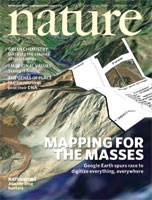
全文见: http://www.nature.com/nature/journal/v439/n7078/full/439776a.html
其中提到了Gore 在1998年提出的数字地球,并谈到“the project died a death in 2001 after Gore lost the 2000 US presidential election.” 那么看来国内的数字地球炒作实在是有点“拾人牙慧”的嫌疑。不过,是Google Earth第一次使数字地球或者“virtual globes”成为现实。
节录几句话:
"It's like the effect of the personal computer in the 1970s, where previously there was quite an élite population of computer users," Goodchild enthuses. "Just as the PC democratized computing, so systems like Google Earth will democratize GIS."
"Google Earth is just the most fantastic thing I have ever seen," says Jack Dangermond, founder and president of ESRI...
--这个大概可以说明Google Earth对GIS业界和学界的一点震撼。
As part of the package, ESRI will also release a free visualization tool, ArcGis Explorer, which some GIS professionals are calling a Google-Earth killer.
--所以,不管ESRI是否承认ArcGIS Explore是不是在Google Earth的压力下推出,是否要和其竞争,事实就是这样。国内的开发商是不是应该有所动作?
其他的还是大家自己看了 :) ,或许我们从中可以得到一些动力或者压力,有灵感更好!







 GoogleEarth不仅让数字地球概念变为现实,还通过类似个人电脑普及计算机的方式推动了地理信息系统(GIS)的民主化。ESRI创始人Jack Dangermond认为GoogleEarth是GIS领域中最具震撼力的产品。面对GoogleEarth带来的挑战,ESRI发布了ArcGIS Explorer,被业界视为潜在的竞争者。
GoogleEarth不仅让数字地球概念变为现实,还通过类似个人电脑普及计算机的方式推动了地理信息系统(GIS)的民主化。ESRI创始人Jack Dangermond认为GoogleEarth是GIS领域中最具震撼力的产品。面对GoogleEarth带来的挑战,ESRI发布了ArcGIS Explorer,被业界视为潜在的竞争者。

















 978
978

 被折叠的 条评论
为什么被折叠?
被折叠的 条评论
为什么被折叠?








